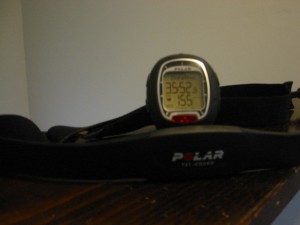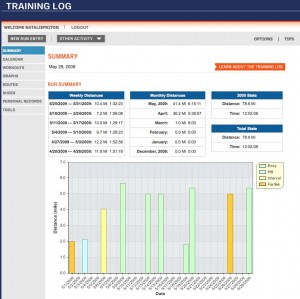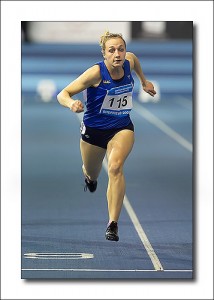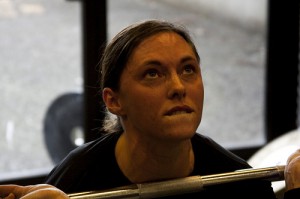 At the Annapolis 10-Miler this year I was behind a couple girls with t-shirts that read on the back “Trained on LSD and Speed” and as a runner I thought that was cute and a clever play on those two words. It wasn’t until days after the race that I started to really consider how the blend of long slow runs and speedwork really are the core tenants of training. And then I realized it was time for me to evaluate if I had been training on LSD and speed.
At the Annapolis 10-Miler this year I was behind a couple girls with t-shirts that read on the back “Trained on LSD and Speed” and as a runner I thought that was cute and a clever play on those two words. It wasn’t until days after the race that I started to really consider how the blend of long slow runs and speedwork really are the core tenants of training. And then I realized it was time for me to evaluate if I had been training on LSD and speed.
I’m on week eight of Bart Yasso’s Runner’s World marathon training program as I train for the Richmond Marathon. His plan very clearly spells out Easy runs, Hills and Hill Repeats, Speedwork, LSD runs, and rest days. This is the last week of the hill work-outs and then we move on to mile repeats and a variety of other track work like the famous Yasso 800s. Up until this last week the LSD runs have been between 7 and 13 miles and I have to admit I was only doing LDs. In each of the long runs, I went out with the goal of maintaining my 9-minute, or faster, pace. Over the weekend I was working the gracie’s gear booth at the Nation’s Tri with Coach Gracie Updyke and we each had a 16-mile long run planned for Sunday, so we got to talking about long runs. Continue reading

 Until this past winter I’d never really run in what I consider to be extremely cold temperatures (teens and low 20s and 30s). Most of my running has been in the spring through fall seasons in warmer temperatures and when I was in college in Charleston, SC, I had plenty of runs in hot and humid temperatures. So while I always thought I was a warm weather runner, by the time winter changed into spring this year I had definitely gotten used to cooler weather running. I wondered if I would welcome warmer temperatures the way I used to.
Until this past winter I’d never really run in what I consider to be extremely cold temperatures (teens and low 20s and 30s). Most of my running has been in the spring through fall seasons in warmer temperatures and when I was in college in Charleston, SC, I had plenty of runs in hot and humid temperatures. So while I always thought I was a warm weather runner, by the time winter changed into spring this year I had definitely gotten used to cooler weather running. I wondered if I would welcome warmer temperatures the way I used to. For a while now I’ve been running with my
For a while now I’ve been running with my For the last month I have been using the training log on runnersworld.com both to log my work-outs as well as to experiment with one of the many available online training log programs available to athletes. It was a few months ago that I decided I would use and
For the last month I have been using the training log on runnersworld.com both to log my work-outs as well as to experiment with one of the many available online training log programs available to athletes. It was a few months ago that I decided I would use and 
 There was a fun article in the May 2009 issue of
There was a fun article in the May 2009 issue of 
 At the suggestion of a friend of mine who is an NSPA-certified instructor, I got a Polar
At the suggestion of a friend of mine who is an NSPA-certified instructor, I got a Polar  When I started training for my first half marathon last year I was stumped by how tired I would get after long runs. A close friend, who is now a
When I started training for my first half marathon last year I was stumped by how tired I would get after long runs. A close friend, who is now a  After taking off from exercise for one full week to let my body really rest, it felt like months since I’d done anything cardiovascular. I picked a Sunday to start back into an organized training and fitness plan and I don’t think I could have picked a better day. From my bed I could see that it was gorgeous out, a perfectly clear and sunny spring day. I knew it would be chilly though so I prepared with layers and was shocked once I got started to find out how windy it was. So why was it perfect? Because it was pretty enough to remind me why I love running outside but it was also chilly and windy enough to humble me and reassured me that I can’t just jump back into running where I left off.
After taking off from exercise for one full week to let my body really rest, it felt like months since I’d done anything cardiovascular. I picked a Sunday to start back into an organized training and fitness plan and I don’t think I could have picked a better day. From my bed I could see that it was gorgeous out, a perfectly clear and sunny spring day. I knew it would be chilly though so I prepared with layers and was shocked once I got started to find out how windy it was. So why was it perfect? Because it was pretty enough to remind me why I love running outside but it was also chilly and windy enough to humble me and reassured me that I can’t just jump back into running where I left off.